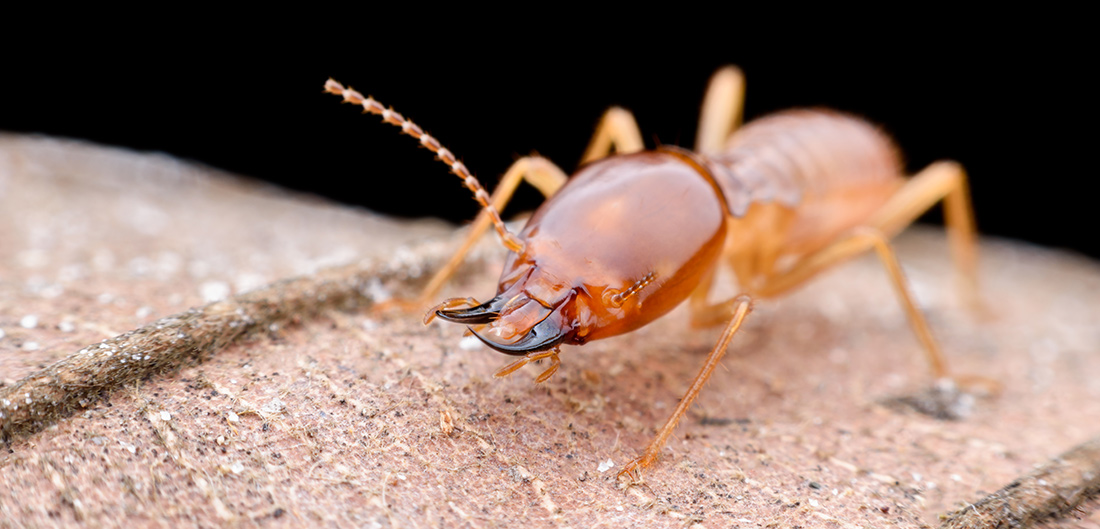In the forest, termites are useful creatures. They enter a dead tree and digest it into humus (rich topsoil). Termites in your home, however, are a different story. Each year, termites cause a staggering $5 billion in damage, according to the National Pest Management Association. If left unchecked, termites can eventually destroy an entire home, chewing their way through wood support beams, roofs, and flooring.
DOES HOMEOWNERS INSURANCE COVER TERMITE DAMAGE?
Generally speaking, the cost to repair termite damage (or hire an exterminator to remove them) is not covered by your homeowners insurance. Pest infestations are typically considered a home maintenance issue. Pests like termites do their “work” slowly and over time, while insurance is designed to protect you from sudden, unexpected events – like a tornado or house fire.
TERMITE PREVENTION
Fortunately, with maintenance and attention, termite damage can be stopped or prevented altogether. By following these treatments and preventive measures, you can reduce the possibility of a termite infestation in your home.
- Schedule a termite inspection. These should be done annually by an expert from pest control services.
- Treat the soil around your house. The first and most important step is to use termiticide to treat the soil around the house. Some choose the DIY route, but professionals can typically get this done in less than a day. Once in place, a treatment will last several years. To treat the soil, a six-inch trench is dug around the house, right up next to the foundation, into which several gallons of the chemical mix are poured in. Some professionals will also inject the concrete foundation with chemicals. When termites ingest the treated soil, they die. They can also carry the chemical back to their colony, with the potential of eliminating much of the population.
- Reduce food sources. Any excess wood around or near your house can attract termites. Remove any dead trees, firewood, and other dead plants and wood from the area. For foundation plantings near your house, choose rock or pea gravel instead of wood mulch.
- Maintain proper drainage. Termites are attracted to moisture. By maintaining proper drainage around your house, you’re taking a proactive step in deterring termites.
- Contract with a pest control company. Look into a warranted spraying contract with a pest control company. For an annual fee, your home receives a termite inspection and is sprayed. If termites get in after all and cause damage, your contract could cover the costs of repairing it.
TYPES OF TERMITES
There are three main types of termites in the United States that could infest your home, depending on the area and conditions in which you live.
- Subterranean termites: This type is typically found in Southern, subtropical areas. These termites live in the soil. They enter the home by creating mud tunnels from wood touching the ground or through cracks in concrete walls and foundations made of hollow blocks. Check for honeycomb patterned wood damage.
- Drywood termites: These termites are found in the lower parts of the states from Virginia to California. They receive the moisture they need to survive directly from the humidity in the air and the wood that they eat. This means that they are attracted to dry, exposed wood and can even be infesting the wood used to make furniture. This type of termite weakens wooden structures in the home by chewing tunnels and often creating extensive damage.
- Dampwood termites: Typically found in Pacific Coast states, these types of termites are drawn to wood that touches the ground and other dead wood materials (such as stumps, fallen trees, or logs). They are responsible for weakening support beams and being the catalyst for excessive moisture. Damage done by this type of termite is smooth and will go across the grain.
SIGNS OF A TERMITE INFESTATION
It’s important to remember that termites are often mistaken as white ants. If you see signs of termites, contact a pest control company immediately. Here are a few telltale signs that termites are present.
- Mud tubes on foundation walls: These are little tunnels built from chewed-up wood, soil, and feces that allow termites to get around and evade predators.
- Tiny holes in the wood: These are often the size of nail holes with mud and dirt near or in the entrances.
- Wood that sounds hollow: If you see cracks and gaps in the wood that sound hollow when you tap it, you may have been hit by termites.
- Discarded wings: Termite swarms will shed their wings and leave behind piles that resemble fish scales.
- Termite droppings: Drywood termites will leave behind tiny mounds of droppings, called frass, which can resemble salt or pepper.
- Clicking sounds: This can be the result of the worker termites eating away at the wooden structure, or soldier termites banging their heads and shaking their bodies on the wooden structure when disturbed.
Once pest control treats your home for the infestation, contact a professional contractor if necessary to assess the damage and replace the damaged wood. Owning a home means the honey-do list never really goes away… but the rewards of having your own place are worth the effort. While you’re looking after your home, we’re looking out for you. Learn more about homeowners insurance with Miller’s and request a free quote online.
This story was originally published in 2017. It was updated with new information in 2019. This article brought to you by our friends at Erie Insurance. Miller’s would like to extend its gratitude to Erie Insurance for both being a wonderful business ally and for letting us use the articles found on their blog, Eriesense.

